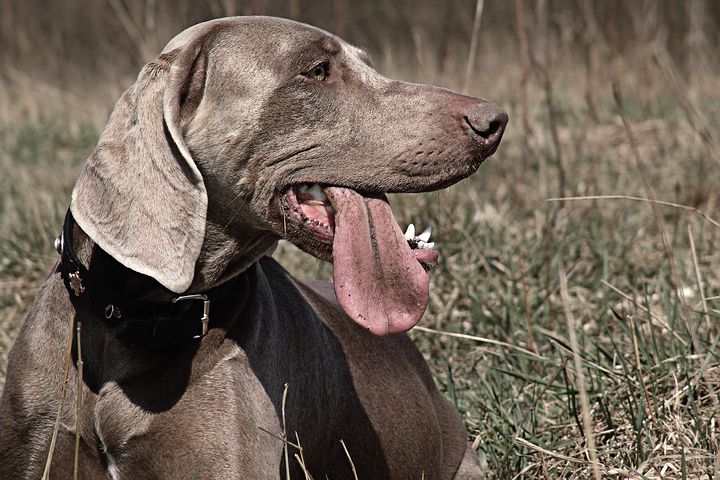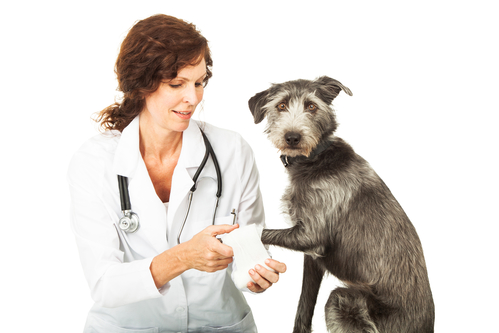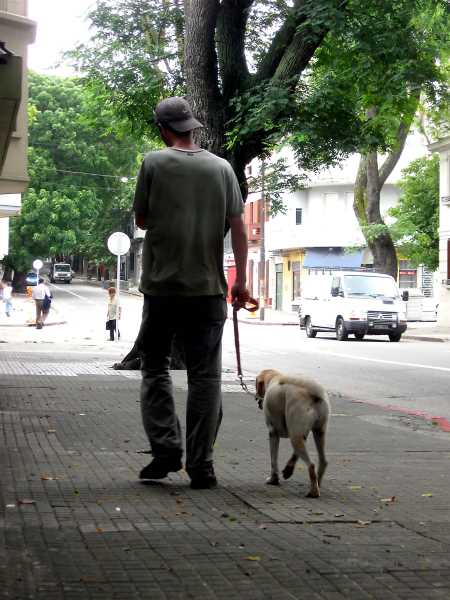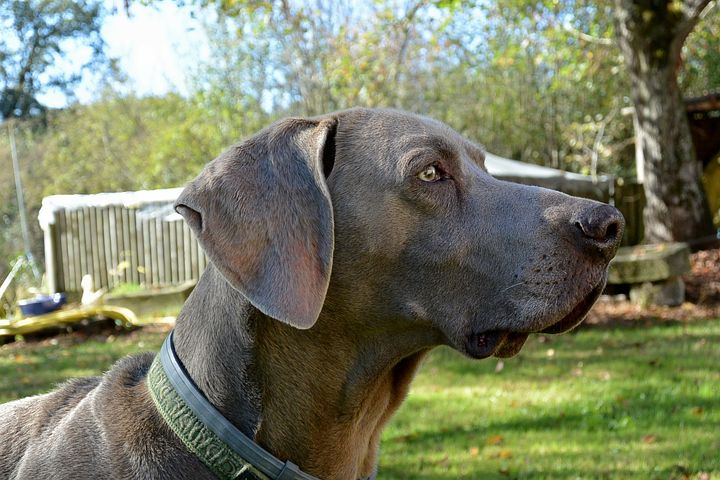Of course if your dog is having a heat stroke, your first thought is to take him to a veterinarian. But, what if you’re not near one? You’ll need to know something about emergency dog heat stroke treatment.
For example, what if your dog becomes overheated when you are hiking on a mountain, camping in a wilderness area, or traveling in the car together?
Unfortunately dogs are far more likely to become overheated or have hyperthermia when they are away from home than when they are lounging in your backyard.
So what will you do in an emergency?

This article will discuss:
- How to keep your dog cool when it is hot outside
- Is your dog in the high risk group for heat strokes?
- Common Causes of Heatstroke in Dogs
- Emergency Dog Heat Stroke Treatment
- Consequences of a Dog Heat Stroke
How to Keep Your Dog Cool When it is Hot
Of course preventing a heat stroke is the best approach. So what can you do to make sure that your dog does not become overheated?
Shade
On a really hot day, your dog needs to be in air conditioning or a shady location, especially if he is outside.
If the day is going to be hot, it’s best to leave your dog at home, rather than risk not being able to keep him cool.
Consider getting a raised bed with a canopy to give your dog shade and lots of air flow, including from underneath him.
Time your Walks
If you take your dog for a walk every day, choose a time when the day is the coolest. Early morning is best.
Even though the air may be cooler toward evening, the pavements and ground will still be hot from the earlier part of the day. Hot surfaces can burn your dog’s pads and make him too warm.
If you must be outside later in the day, steer your dog to grass or shaded surfaces, so that her paws aren’t burned by hot asphalt or concrete.
Water
Make sure that your dog has a good supply of fresh water, whether inside or outside. If you have to leave her during the day, consider getting a water fountain.
If you go out together, make sure you take a travel bowl and some water.
Your Dog’s Haircut
While it may seem that your dog will be cooler if your shave his hair, a dog’s hair actually provides some insulation from the heat.
Your Weimaraner will be much more comfortable if you leave his hair intact. Keep in mind, that your dog’s hair also protects him from sunburn.
A Cooling Swim
Whether you take your dog to the lake or river, or you are spending the day at home, your dog will be cooler if he is in water.
At home, a kiddie wading pool or a pool made for dogs is enough to keep your dog cool if it is filled with fresh, cool water. And, while he’s basking in the cool water, he’ll also have access to nice, cool drinks.
Dogs in Hot Cars
On hot days, leave your dog at home, whether you are running errands or going to be outside, for example, at a festival.
The single most common reason for heat strokes in dogs, is when a dog is left in a car during hot weather. Never, ever leave your dog in the car, for even a minute or two.
You may believe that you will be only a short while, but delays happen, and your dog can’t escape if the car heats up.
And cars do heat up fast. When the sun hits a car on an 80 degree F. day, it takes only 15 minutes for the temperature inside the car to reach 130 to 170 degrees. And that’s when the windows are slightly open.
When the windows are closed, and the temperature is just 60 degrees, we see the same temperature rise because of solar gain.
A dog’s temperatures rises even faster when:
- The car is a dark color
- A dog is panting (warm air)
- The humidity is high
Even worse, if you have 2 or more dogs, the temperature rise is compounded by the dogs’ panting together.
Avoid a tragedy. Leave your dog at home.
Dogs Most Likely to Have a Heat Stroke
So, even under the best of circumstances, there are some dogs who are more likely to suffer from hyperthermia than others.
- #1 cause – dogs left in cars in warm or hot weather
- Pets who are penned or tied outside, without access to shade
- Dogs with dark or black hair. The dark color absorbs the heat from the sun.
- Puppies
- Senior dogs – they have less tolerance for the heat and mind it more.
- Dogs who are sick. If your dog has a chronic condition, he is more likely to have trouble with hot weather. Illnesses like hypothyroidism, heart disease or kidney disease are examples.
- A dog who has prolonged seizures
- High energy dogs who keep on playing or running. This includes dogs who hunt in the heat. Your dog may continue to work for you, because she wants to please you. She won’t tell you she’s getting too hot. You need to set the limits, so she doesn’t get overheated.
- Short nosed breeds like boxers, pugs, and mastiffs, who do not cool off well when they pant.
- Dogs with a previous history of a heat stroke. Any dog who has had a heat stroke will be more likely to have another one in the future.
- Dogs who are not used to hot weather. If your dog is used to cooler weather and travels to a warmer climate, he is more susceptible than if he lived there all the time.
- Overweight dogs
So, the truth is that, almost all dogs are at risk for a heat stroke, given the right circumstances.
Causes of Heatstroke in Dogs
The normal temperature of a dog is 101.5 degrees, and the normal range is between 99.5 degrees and 102.5 degrees.
So within that range, a dog is functioning normally. Anything higher or lower, and the dog is not well.
Dogs do not have sweat glands to help them be cooler. Heat stroke occurs when a dog’s body has more heat than it can dissipate through panting or through the dog’s paws. And the dog’s temperature rises above 102.5 degrees.
Our dogs get rid of some heat through their paws, but mostly they pant to exchange hot air for cooler air. Being able to pant and get rid of excess heat is critical to your dog’s ability to withstand hot days.
Even being muzzled under a hair dryer at the groomer’s or being confined in a crate with too little ventilation can cause a problem. In either case, the dog would not be able to cool himself down by panting.
Emergency Dog Heat Stroke Treatment
How do you know if your dog is having a heat stroke?
- Breathing – The first sign of a heat stroke is fast, difficult breathing.
- Mucous membranes – When a dog is overheating, his mucous membranes and tongue become bright red.
- Bloody diarrhea or vomit
- Drooling
- Acting like he’s drunk, unsteady on his feet
- Body temperature over 104 degrees F
- Seizures
- Coma – the dog becomes unresponsive. At this point the dog’s tongue has turned blue.
What you can do to help a dog with hyperthermia
As soon as you realize that your dog is overheated, get him into a shady area or air conditioning. The dog needs to be out of direct heat and sunlight.
Have someone call the vet and tell them that you are coming.
While they are making the phone call, you need to follow these emergency procedures:
- Take your dog’s temperature. You need to know what you’re dealing with. And you also need to know if his temperature comes down.
- Spray your dog with cool water from a hose, for a minute or two, then take his temperature again.
- You can also place cool water-soaked towels on your dog’s head, neck, and underneath the front and back legs.
- Gently rinse his tongue with cool water, but don’t let it run down his throat, as it can get into his lungs.
- Turn on a fan that is directed at your dog.
*This is important. Your goal is to bring your dog’s temperature down to 104 degrees F. so that you can safely move him. When you reach that temperature, take him to a veterinarian immediately.
Consequences of a Dog Heat Stroke
So how serious is a dog heat stroke? Very.
Each year hundreds of dogs die from heat strokes. However, if a dog survives, even after emergency heat stroke treatment, he can have lingering problems.
Heat strokes in dogs can cause permanent problems like these:
- Problems with blood clotting
- Kidney failure
- Neurological problems, including seizures and swelling of the brain
- Abnormal heart rhythms
- Destruction of the digestive tract linings
- Respiratory arrest or stoppage of breathing
All that having been said, the most important advice is to do what you can to prevent a problem.
However, despite all that you’ve done, under the right circumstances, your dog could overheat. It’s best to be prepared and know what you can do to help your dog.






Leave a Reply